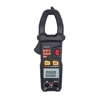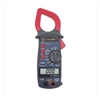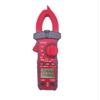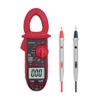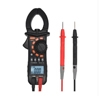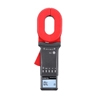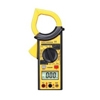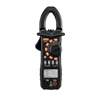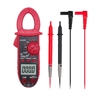Clamp meters are convenient and efficient tools for measuring electrical current, widely used in electrical engineering and home repair. By clamping around a wire without direct contact, clamp meters can measure current, voltage, resistance, and other parameters, making them essential for electricians and technicians. When purchasing a clamp meter, price is a crucial factor, especially given the wide variety of types, functions, accuracy levels, and brands available. This article from Tool.com. provides a price list for clamp meters to help you select the right product.
Clamp Meter Price List
Factors Affecting Clamp Meter Prices
Clamp meters vary widely in price, and understanding the factors that influence these differences can help you select a tool that balances quality and cost-effectiveness. Here’s a closer look at the main elements that impact clamp meter pricing:
Functionality and Features
The features a clamp meter offers significantly affect its price. Basic clamp meters primarily measure current, while advanced models offer a range of additional functions:
- Basic Current Measurement: Entry-level clamp meters often focus solely on measuring AC current, making them more affordable but limited in scope.
- Multi-Parameter Measurement: Mid-range and high-end models may include capabilities to measure AC/DC voltage, resistance, continuity, frequency, and even temperature, providing a more versatile tool. These added functions make the clamp meter suitable for more complex troubleshooting tasks, increasing its price.
- Data Logging and Memory Storage: Premium clamp meters often come with memory storage or data logging features, which allow users to store readings for later review. This is particularly useful for professionals who need to track and analyze data over time, but it also raises the cost.
- Connectivity Options: Some advanced models include Bluetooth or Wi-Fi connectivity, enabling easy data transfer to mobile devices or computers for reporting and analysis. These features are ideal for field technicians but add to the overall price.
Accuracy and Precision
Higher accuracy levels are often essential for professional applications, as they ensure reliable readings. Here’s how accuracy impacts the price:
- Standard Accuracy: Basic clamp meters typically have an accuracy within 1-2%, which is sufficient for general-purpose applications such as home repairs or DIY projects. These models are usually more affordable.
- High Accuracy for Professional Use: More precise meters, such as those with an accuracy of 0.5% or better, are essential for tasks that require meticulous measurements, such as in industrial or research settings. High-accuracy clamp meters require more advanced engineering and calibration, making them more expensive.
- True RMS Measurement: True RMS (Root Mean Square) capability is important for accurately measuring AC current in circuits with non-linear loads, such as variable speed drives or power supplies. Meters with True RMS technology tend to be more costly but provide greater accuracy in fluctuating electrical environments.
Measurement Range
The range of measurements a clamp meter can handle—particularly for current, voltage, and resistance—also influences its price:
- Limited Range for Basic Use: Basic clamp meters often have a narrower range, typically limited to measuring lower currents and voltages. These models are cost-effective but may not cover high-capacity electrical tasks.
- Wide Measurement Range for Versatile Applications: More advanced meters can measure both high and low currents (from milliamps to thousands of amps) and wider voltage ranges, making them suitable for both small electronic work and heavy-duty applications. Models with broader ranges are generally more expensive due to the enhanced technology and components required.
- Expanded Range for Specific Needs: Some clamp meters are designed for specialized measurements, such as very high voltages or frequencies used in industrial applications. These specialized meters come with specific engineering features and safety considerations, which raise the price.
How to Choose the Right Clamp Meter
Choosing the right clamp meter involves assessing several important factors to ensure the tool meets your specific needs. Here’s a closer look at key aspects to consider when selecting the best clamp meter for your requirements:
Identify Measurement Needs
Start by identifying what measurements you need to take, as clamp meters come with various functions tailored to different applications. Here are some common types and their uses:
- Current Only: If you only need to measure AC or DC current, a basic clamp meter might be sufficient. These models focus on measuring the electric current through a wire, making them ideal for quick checks on current flow.
- Current and Voltage: Some clamp meters combine current and voltage measurements, allowing you to check both parameters in a single device. These are great for general electrical troubleshooting and home repairs.
- Multifunction Meters: For more complex needs, multifunction clamp meters can measure multiple parameters, including current, voltage, resistance, frequency, capacitance, and even temperature. These advanced features are perfect for professional electricians who require versatility on the job.
- High-Precision Models: In scenarios requiring precise measurements (such as research or scientific applications), high-precision clamp meters with data logging and storage features are the best choice, allowing for accurate readings and easy data management.
Consider Additional Features for Efficiency and Convenience
Modern clamp meters come with added features that enhance ease of use and convenience. Depending on your application, these extra features can make the device more user-friendly and effective:
- Auto-Ranging: Auto-ranging meters automatically select the appropriate measurement range, simplifying usage for beginners and reducing the chances of errors.
- Data Logging and Bluetooth Connectivity: Advanced models allow for data storage and transfer, making it easy to track and analyze readings over time. Bluetooth-enabled models sync with mobile devices, which can be a great asset for professionals needing to document measurements.
- Backlit Display: A backlit or large digital display ensures readability even in low-light conditions, a crucial feature for technicians working in dark or confined spaces.
- True RMS Measurement: For accuracy in AC circuits, especially when dealing with fluctuating loads, clamp meters with True RMS (Root Mean Square) capabilities provide more accurate measurements.

